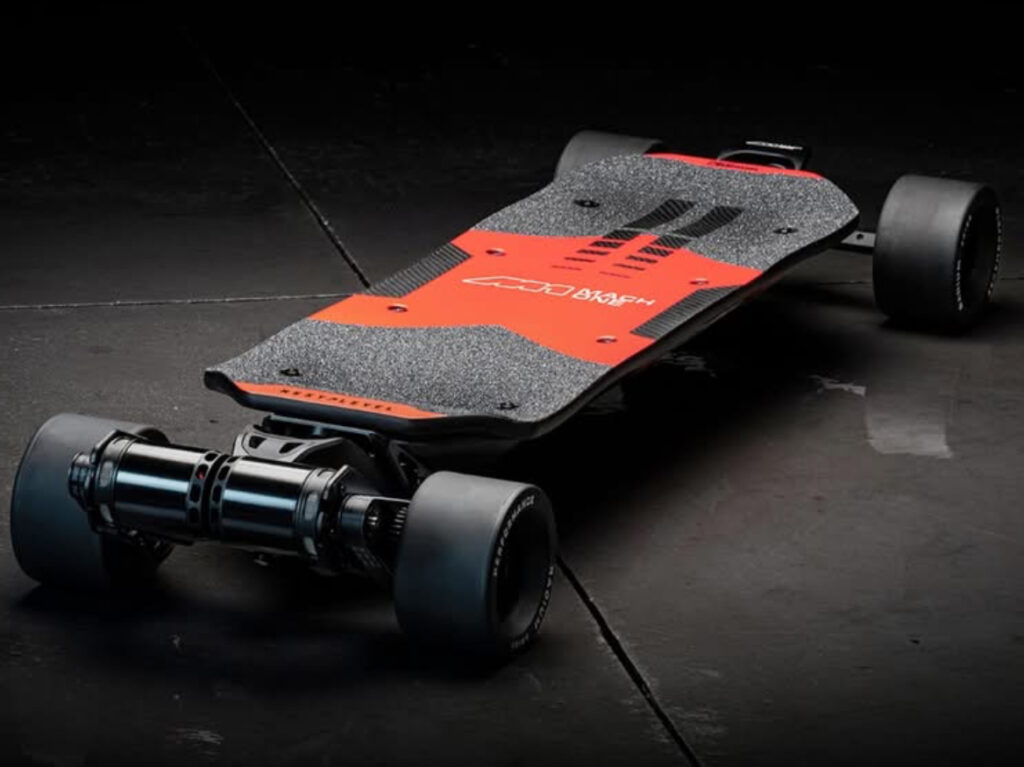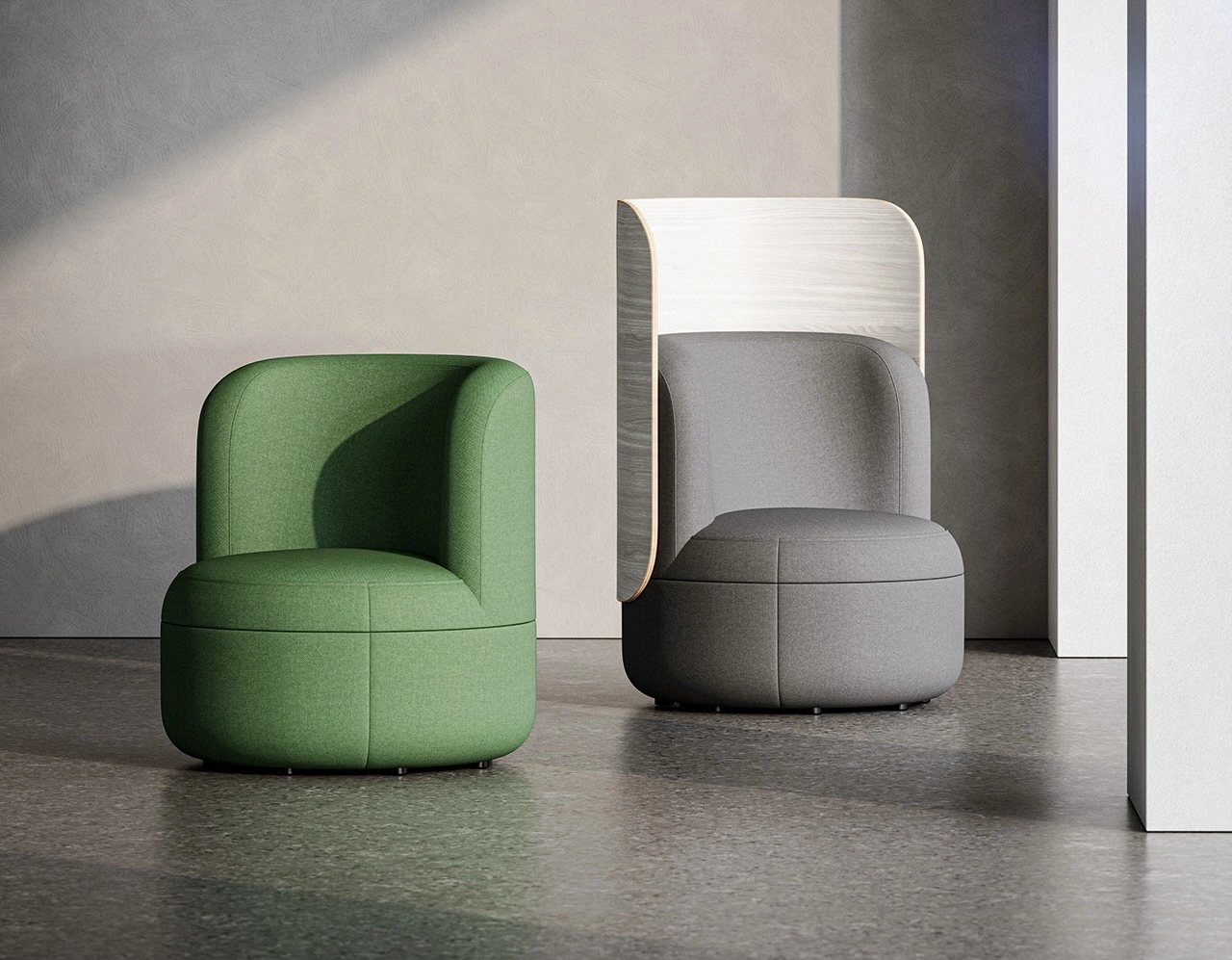Electric skateboards have come a long way—from clunky prototypes and modest commuter tools to speed monsters and off-road marvels. But with the Mach One by Radium Performance, we’re seeing the birth of something far more radical: an electric skateboard engineered with the precision and adrenaline of Formula 1 racing. Developed by an Australian startup fueled by a love for motorsport, the Mach One blends next-gen performance, pioneering design, and road-dominating power. This board isn’t for leisure—it’s for those who want to push boundaries and ride at the edge.
Performance Specs: 0–30 mph in Three Seconds
The numbers alone are enough to raise eyebrows. The Mach One reaches top speeds of 45 mph (72 km/h) and rockets from 0 to 30 mph (48 km/h) in just three seconds, a figure that places it in elite territory among high-performance personal electric vehicles. Propulsion comes from dual rear-mounted electric motors outputting a combined 8,000 watts, offering raw power typically seen in compact EVs or electric motorcycles.
This kind of acceleration is more than a novelty—it’s a paradigm shift in urban mobility. It means the Mach One can pace cars in traffic, surge up hills without hesitation, and obliterate the kind of hesitation that plagues lesser e-boards. It’s not just quick; it’s competition-grade fast.
Torque Vectoring: Precision Steering for Skateboards
Where most electric skateboards depend on basic throttle/brake inputs and lean-to-steer dynamics, the Mach One introduces a concept usually reserved for high-end sports cars: torque vectoring. In Radium’s system—marketed as the world’s first of its kind for e-boards—each motor dynamically adjusts the amount of torque delivered to the rear wheels based on cornering load.
What does that mean for the rider? Simply put: improved traction, smoother cornering, and a more responsive ride. When carving through bends or slaloming downhill, the wheel under more pressure gets more power, while the opposite receives less—maintaining balance and grip through the curve. It’s an automotive-grade technology distilled into a portable, battery-powered board.
Built Like a Race Car: Carbon, Rubber, and Steel
You don’t create a board capable of racing speeds without ensuring it’s built to withstand the forces it generates. The Mach One is engineered around a 10-inch-wide carbon fiber deck—light, stiff, and strong. The deck itself doubles as the housing for the electronics and battery system, featuring a removable top panel for easy upgrades and internal access.
The wheels are solid rubber, driven by urethane belts reinforced with steel fiber, providing both grip and longevity. And unlike standard trucks, the Mach One uses a swing-arm suspension system on both ends, adding an additional layer of control and damping for high-speed stability. This isn’t some souped-up longboard—it’s a rolling chassis inspired by race engineering.
Battery and Range: 48V of Adventure
Powering the ride is a 48-volt lithium-ion battery pack, integrated seamlessly into the deck structure. Riders can expect up to 30 miles (48 km) on a full charge, with charging taking approximately 2 hours—fast considering the performance.
This range is made even more impressive when you factor in the board’s weight and power output. Weighing in at 17 kilograms (37.5 pounds), the Mach One isn’t light, but it’s balanced enough for carry and lift when needed. The placement of weight low in the deck contributes to a center of gravity ideal for fast riding, enhancing control and comfort.
Control and Safety: Ergonomic, Responsive, Precise
A machine this powerful needs a reliable interface—and Radium doesn’t disappoint. The Mach One is controlled via a custom handheld remote that incorporates real-time telemetry, speed modes, and braking sensitivity settings. The remote connects via secure Bluetooth with low latency, offering immediate feedback to user input.
To ensure safety at high speeds, the board features regenerative braking with redundant emergency braking protocols. There’s also traction control embedded in the software, which works in tandem with the torque vectoring system to prevent wheel slip during rapid acceleration or panic stops.
Riders can also track board diagnostics and firmware updates through a companion mobile app, rounding out the tech suite with a layer of connected control.
Design Language: Where Performance Meets Aesthetics
Just one look at the Mach One is enough to appreciate the Formula 1 inspiration. The carbon deck is sculpted with aerodynamic contours and a motorsport finish, echoing the lines of a race car monocoque. The swing-arm assembly even resembles the suspension structure found on high-speed track machines.
Color options remain minimal and aggressive—primarily matte black with red or gunmetal accents—allowing the performance speak for itself. The visual identity of the board aligns with the Radium Performance brand: speed-focused, forward-thinking, and unapologetically elite.
Early Adopters and Pricing Strategy
Radium Performance is taking a phased approach to its release. The first 100 units are available at a discounted AU$5,298 (approx. US$3,175)—a price that undercuts some competitors while offering more power and innovation. After the early bird batch, pricing is expected to rise, reflecting the board’s luxury-tier performance and construction.
This limited run is aimed at serious riders, thrill-seekers, and early tech adopters who view transportation as more than just commuting—it’s a canvas for adrenaline. These buyers aren’t flinching at the price tag; they’re eyeing specs and tech that push the boundaries of what’s possible.
Comparison: Mach One vs. the Market
While there are many impressive e-boards on the market—from Boosted (now defunct) to Evolve and BajaBoard—none offer the combination of power, advanced steering dynamics, and carbon composite construction that the Mach One does.
While BajaBoard offers rugged off-road capability, and Evolve balances everyday performance, the Mach One carves out a new category: high-speed, track-inspired electric skateboarding for asphalt warriors.
Practicality: Who Is the Mach One Really For?
This board is not for the faint-hearted, or the casual campus cruiser. It’s a tool for urban speed demons, for motorsport enthusiasts who’ve grown up on Red Bull Racing and now want to feel G-forces on a boardwalk.
That said, Radium isn’t ignoring functionality. With a range of 30 miles, intelligent traction systems, and upgradable electronics, the Mach One could very well serve as a daily commuter—provided your commute has wide lanes, forgiving traffic laws, and a helmet policy.
The Verdict: Future on Four Wheels
What Radium Performance has accomplished with the Mach One is more than just building another electric board—they’ve set a new benchmark. Borrowing from Formula 1’s playbook, the Mach One rethinks every angle of electric skateboarding: from powertrain logic to material engineering, control systems to suspension design.
It marks a new era for personal electric vehicles. Not only is it fast, but it’s smart, durable, and designed with precision. It’s a glimpse of a future where micro-mobility doesn’t mean compromise, but exhilaration.
No comments yet.








